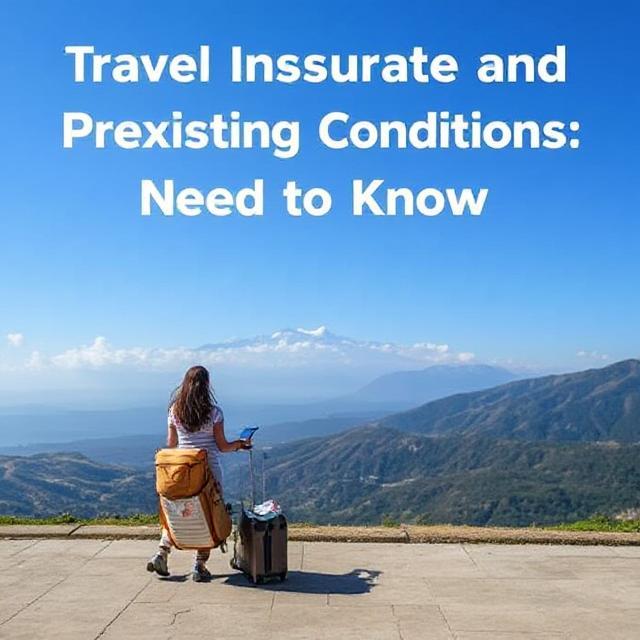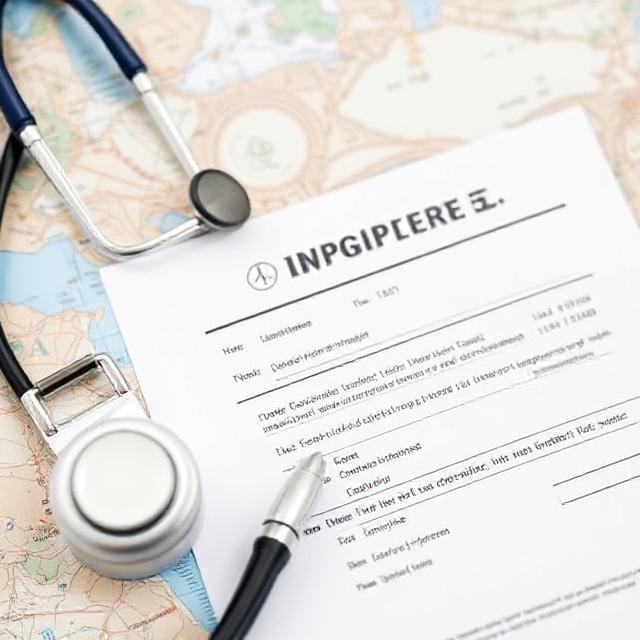Travel Insurance and Pre-Existing Conditions refer to how insurance policies cover medical issues that existed before purchasing coverage. Many insurers exclude or limit benefits for such conditions, making it essential to check policy details. Some providers offer waivers or special coverage if declared upfront and purchased within a specific timeframe. Without proper coverage, travelers may face high medical costs abroad. Understanding Travel Insurance and Pre-Existing Conditions ensures travelers get the right protection, avoiding claim denials. Comparing policies, disclosing health history, and choosing comprehensive plans help secure financial and medical support in case of emergencies while traveling.

Travel Insurance and Pre-Existing Conditions
Travel insurance is essential for protecting yourself against unexpected medical emergencies, trip cancellations, and other travel-related risks. However, if you have a pre-existing medical condition, securing the right coverage can be more complicated. Here’s a detailed guide to understanding how pre-existing conditions affect travel insurance and what you should consider before purchasing a policy.
1. What is a Pre-Existing Medical Condition?
A pre-existing condition refers to any illness, injury, or medical condition that you have been diagnosed with, received treatment for, or experienced symptoms of before purchasing travel insurance. Common examples include:
-
Heart disease
-
Diabetes
-
High blood pressure
-
Asthma
-
Cancer (in remission or active)
-
Mental health conditions (e.g., anxiety, depression)

-
Previous surgeries or chronic illnesses
Insurers define pre-existing conditions differently, so always check the policy wording.
2. Does Standard Travel Insurance Cover Pre-Existing Conditions?
Most standard travel insurance policies exclude pre-existing conditions unless they are stable and declared to the insurer. If you don’t disclose a condition and later need to make a claim, your insurer may deny coverage.
Key Points:
-
Automatic Coverage (Stable Conditions): Some insurers automatically cover pre-existing conditions if they have been stable for a certain period (e.g., 3-12 months) with no changes in medication or treatment.
-
Medical Screening/Questionnaire: Many insurers require you to complete a medical screening to assess your eligibility.
-
Exclusion Waiver: Some policies may cover pre-existing conditions if you pay an additional premium.
3. Types of Travel Insurance Policies for Pre-Existing Conditions
A) Standard Policies with Pre-Existing Condition Coverage
-
Some insurers offer limited coverage for stable pre-existing conditions.
-
You may need to meet stability clauses (e.g., no recent hospitalizations or medication changes).
B) Specialized Pre-Existing Condition Travel Insurance
-
Some providers specialize in covering travelers with chronic illnesses (e.g., AllClear, Staysure, InsureandGo).
-
These policies may include:
-
Emergency medical treatment abroad
-
Cancellation due to flare-ups
-
Repatriation (medical evacuation)
-
C) Annual Multi-Trip Policies with Pre-Existing Condition Coverage
-
If you travel frequently, an annual policy may be cost-effective.
-
Ensure it covers all declared conditions for every trip.
4. How to Get Covered for a Pre-Existing Condition
-
Disclose All Medical Conditions – Be honest about your health history.
-
Check Stability Requirements – Many insurers require conditions to be stable for 3-12 months.
-
Compare Policies – Use comparison sites or specialized insurers.
-
Get a Medical Screening – Some insurers may require a doctor’s note or medical assessment.
-
Pay Extra if Necessary – Some insurers charge higher premiums for pre-existing conditions.
5. What Happens If You Don’t Declare a Pre-Existing Condition?
-
Claim Denial: If you need treatment related to an undeclared condition, your claim will likely be rejected.
-
Policy Voidance: The insurer may cancel your policy entirely.
-
Legal Consequences: Misrepresentation could lead to fraud allegations.
6. Common Exclusions Even with Coverage
Even if your pre-existing condition is covered, some situations may still be excluded:
-
Non-emergency treatments (e.g., routine check-ups)
-
Elective procedures (e.g., cosmetic surgery)
-
Adventure sports injuries (if related to your condition)
-
Pregnancy-related complications (unless specified)
7. Tips for Choosing the Right Policy
✅ Compare Multiple Insurers – Prices and coverage vary widely.
✅ Read the Fine Print – Look for stability clauses and exclusions.
✅ Check Emergency Assistance – Ensure 24/7 medical support.
✅ Consider a Higher Excess – This may lower your premium.
✅ Consult a Specialist Broker – If you have complex conditions.
8. Best Travel Insurance Providers for Pre-Existing Conditions (2025)
|
Provider |
Best For |
Key Feature |
|
AllClear |
Comprehensive coverage |
Specializes in pre-existing conditions |
|
Staysure |
Seniors with medical issues |
No upper age limit |
|
InsureandGo |
Affordable options |
Covers many conditions automatically |
|
Avanti |
Cruise travelers |
Covers chronic conditions on cruises |
|
AXA |
Quick approvals |
Good for stable conditions |
9. Final Advice
-
Always declare your conditions – Better safe than sorry.
-
Buy insurance early – Some policies require purchase within 14-21 days of booking.
-
Carry medical records – Helps in emergencies abroad.
Medical proof for travel reimbursement is a doctor's note confirming a health condition that prevented travel. It supports insurance claims for refunds or rescheduling.

By understanding how pre-existing conditions affect travel insurance, you can find the right policy and travel with peace of mind. Safe travels! ✈️🏥
